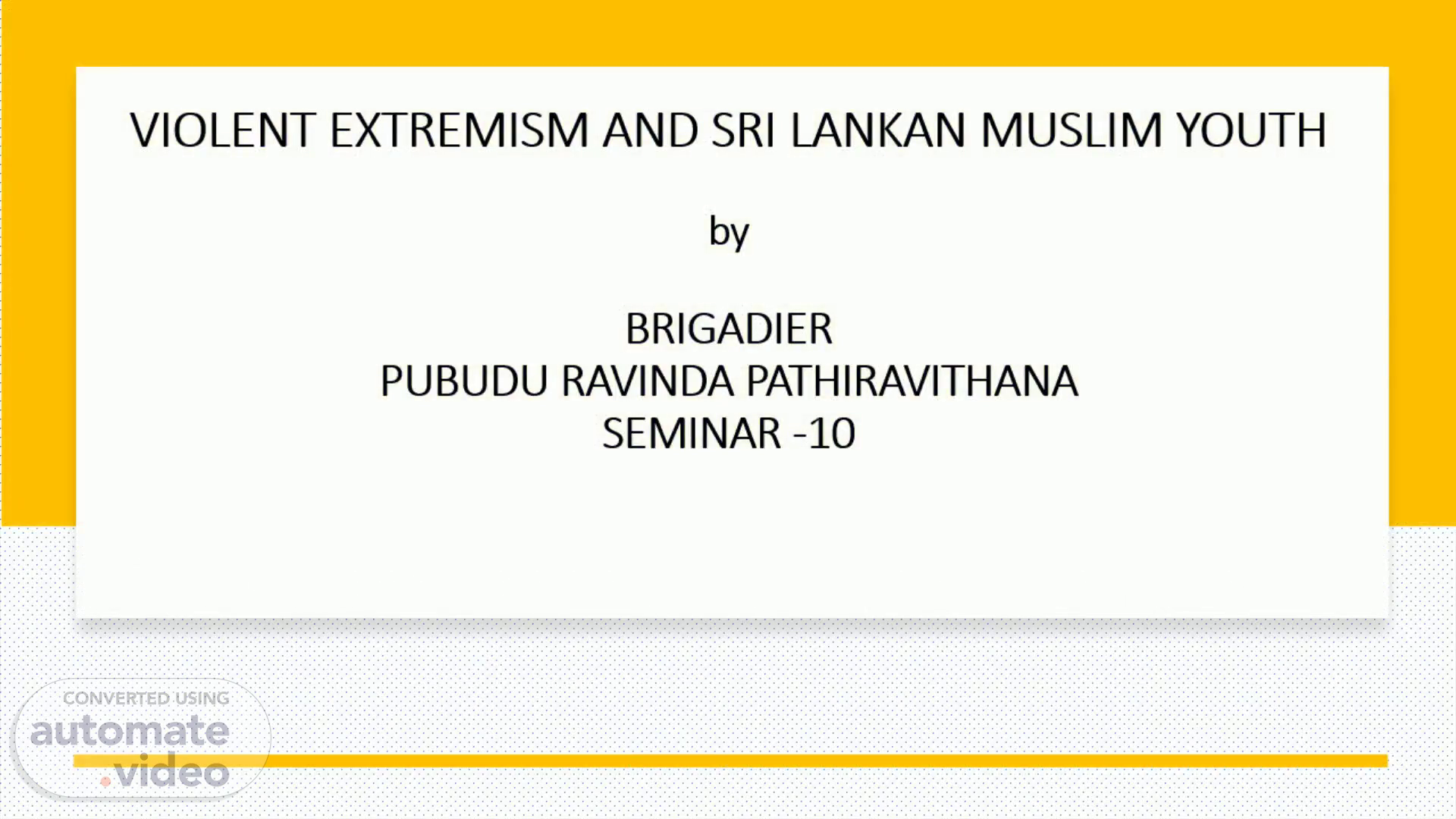
Page 1 (0s)
VIOLENT EXTREMISM AND SRI LANKAN MUSLIM YOUTH by BRIGADIER PUBUDU RAVINDA PATHIRAVITHANA SEMINAR -10.
Page 2 (3s)
INTRODUCTION Sri Lanka has been involved in numerous internal disputes, ethnic unrest, and revolutions for four to five decades. Sri Lanka has taken up arms for violent conflicts. After the ethnic civil war, many incidents targeted the Muslim community in Sri Lanka. Sri Lanka's security was compromised by terrorist attacks on Easter Sunday in 2019 by some Muslim youths..
Page 3 (35s)
RESEARCH QUESTION The rise of violent extremism in Sri Lanka was the cause of the Easter Sunday bombing. This leads to the question: what triggers and causes Sri Lankan Muslim youths to engage in such behavior? THE SCOPE The scope of the study is divided into five chapters. In Chapter 1, the author introduces the subject. In chapter 2, literature review, chapter 3 methodology, and chapters 4 and 5, the author discusses the Research Analysis based on 4 case studies. The final chapter provides recommendations based on the findings. The recommendations are purely focused on curbing and mitigating youth discontent based on the instrument of national power..
Page 4 (1m 17s)
METHODOLOGY The Radicalization and extremism of individuals or groups can influence the existing system to change society. However, Radicalization is not a process that can exist overnight. Instead, social, political, and religious grievances may cause the Radicalization of individuals or groups over time. Furthermore, the author developed primary and five secondary research questions to determine the exact factors that motivate Muslim youth in Sri Lanka to become radicalized. Nonetheless, the author articulated his radicalization model based on the literature that has been published to study the factors that drive youth discontent. Thus, the radicalization model clearly explains the main factors that lead to the transformation based on motivation and culminates in extreme Radicalization..
Page 5 (2m 10s)
CONCLUSION. Centered on the interpretation of findings, the author made his recommendations based on the Instruments of National Power to address national security challenges aligned on a Comprehensive national plan..
Page 6 (2m 23s)
THE END.